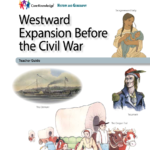In the Constitution, Congress is charged with providing for the general welfare of the country’s
citizens. Historically, this has meant improving transportation, promoting agriculture
and industry, protecting health and the environment and seeking ways to solve social and
economic problems. In 1956, Congress passed the Federal-Aid Highway Act, popularly known as the National Interstate and Defense Highways Act, authorizing federal funding for the extension and
construction of a robust network of interstate highways. This project was one of the largest public
works in U.S. history establishing key transportation infrastructure that impacted lives of all
Americans — changing communities, access and economic possibilities and also providing key
routes for evacuating urban centers — a critical national defense issue in the Cold War era.
Analyzing primary source material, students discuss the origins and reasons for the National
Interstate and Defense Highways Act. Then, they work with historical and contemporary maps
as they consider the impact this important congressionally funded project. While intended for 8th
grade students, the lesson can be adapted for other grade levels.
Westward Expansion Before the Civil War (CKHG Unit)

The unit explores the westward movement of Americans in the nineteenth century: the early explorers, effects of new developments in transportation, Native American resistance to settlers, and the treaties broken by government officials. Across 10 lessons, students explore the use of Manifest Destiny to promote the acquisition of US territory, the annexation of Texas, the Oregon Trail, and the California gold rush.